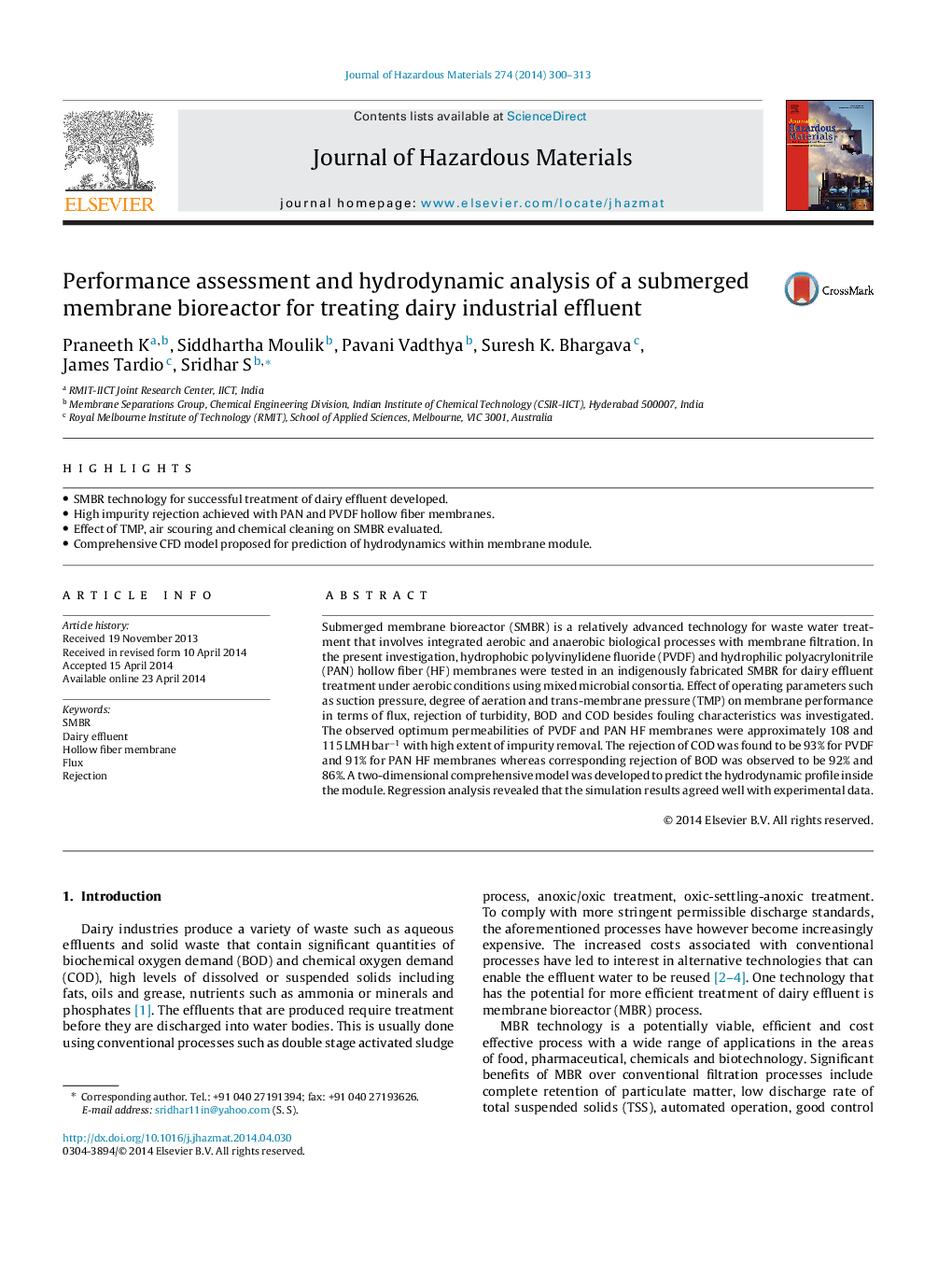| Article ID | Journal | Published Year | Pages | File Type |
|---|---|---|---|---|
| 576704 | Journal of Hazardous Materials | 2014 | 14 Pages |
Abstract
Submerged membrane bioreactor (SMBR) is a relatively advanced technology for waste water treatment that involves integrated aerobic and anaerobic biological processes with membrane filtration. In the present investigation, hydrophobic polyvinylidene fluoride (PVDF) and hydrophilic polyacrylonitrile (PAN) hollow fiber (HF) membranes were tested in an indigenously fabricated SMBR for dairy effluent treatment under aerobic conditions using mixed microbial consortia. Effect of operating parameters such as suction pressure, degree of aeration and trans-membrane pressure (TMP) on membrane performance in terms of flux, rejection of turbidity, BOD and COD besides fouling characteristics was investigated. The observed optimum permeabilities of PVDF and PAN HF membranes were approximately 108 and 115Â LMHÂ barâ1 with high extent of impurity removal. The rejection of COD was found to be 93% for PVDF and 91% for PAN HF membranes whereas corresponding rejection of BOD was observed to be 92% and 86%. A two-dimensional comprehensive model was developed to predict the hydrodynamic profile inside the module. Regression analysis revealed that the simulation results agreed well with experimental data.
Related Topics
Physical Sciences and Engineering
Chemical Engineering
Chemical Health and Safety
Authors
Praneeth K, Siddhartha Moulik, Pavani Vadthya, Suresh K. Bhargava, James Tardio, Sridhar S,
